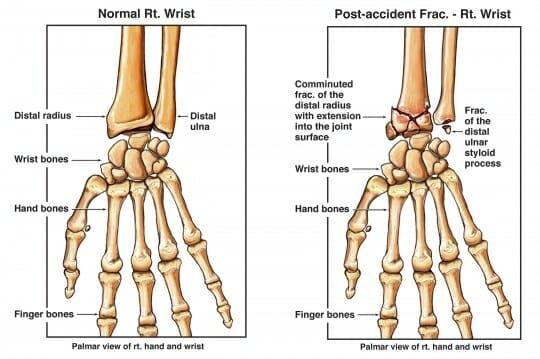Written by Moussia Krinsky-Raskin, MS, OTR/L
Edited by Alex Ariza
Occupational Therapist and Hand Specialist, Moussia shares her professional expertise in treating broken wrists.
I want you to close your eyes. Envision yourself walking down the street, admiring the surroundings, then suddenly you lose your footing. Instinctively, what do you do?
To brace yourself for the fall, most people intuitively stick out their hand. A full on outstretched hand often results in a Distal Radius Fracture (broken wrist).


So, what do those fancy words really mean? In your forearm, there are two bones, the radius, and the ulna. The distal end of the radius bone, meaning the part closest to your wrist, is most often fractured. Often, this requires a surgical procedure known as an open reduction internal fixation (“ORIF”) meaning plates and screws are inserted to secure the bone. Although the wrist is now more stable, the mobility is compromised.
That’s where I come in. This is actually one of the most common injuries we see in the clinic, and, if treated properly, rehabs beautifully. Usually, the greatest restrictions of movement are the extension of the wrist extension and supination of the forearm (bringing your palm back and face up). If a patient did undergo the ORIF surgical procedure, treatment will incorporate scar management, which is essential in improving the elongation of the soft tissue.
After any hand-related injury, strength will be diminished because if you “don’t use it you lose it.” But do not worry! Although this is very common cause for frustration among patients, it’s important to remember that as the motion improves, so will the strength.
As a clinician, this is one of the more rewarding diagnosis to treat because people progress rapidly and resume functional independence of most activities within a matter of weeks.
Have you recently broken your wrist? We can help. Schedule an appointment with any of our occupational therapists today.
Fill out my online form.
.png?auto=format&auto=compress&h=150)
